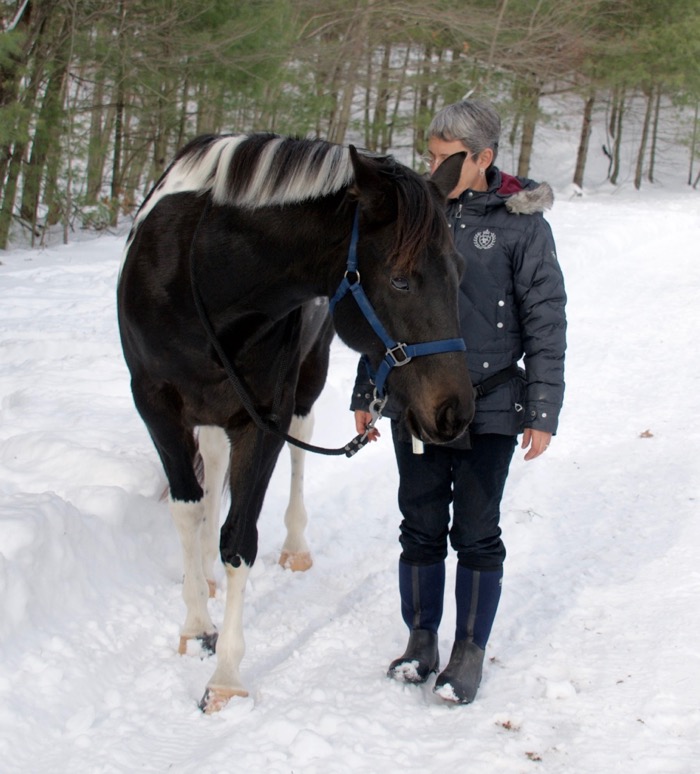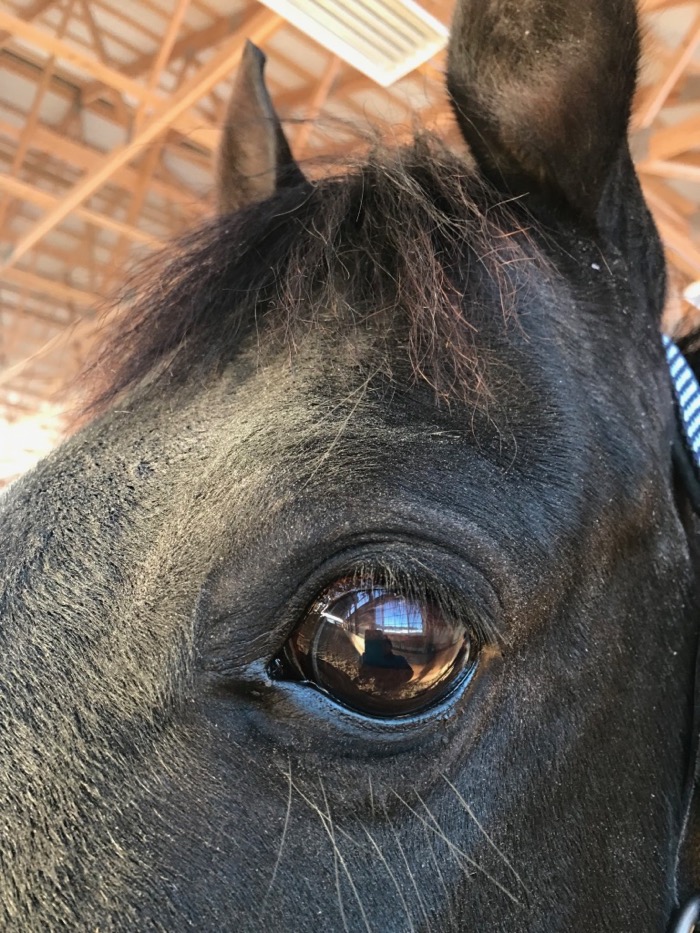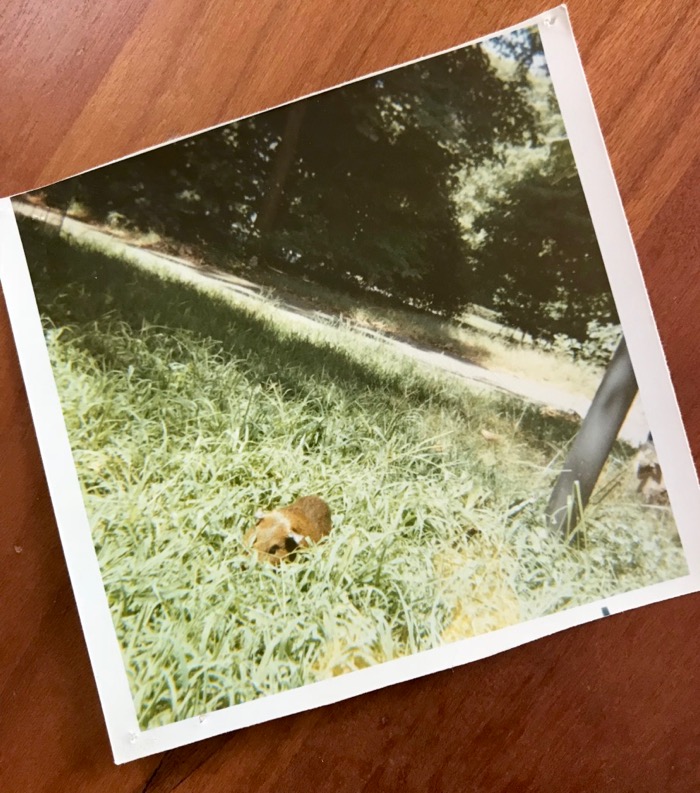I am writing this while looking out at the Atlantic Ocean from my room at the Yankee Clipper Inn. I am here for two days with my good friend, Karen Pryor. A couple of times a year we go on these writing retreats. We hole up in our separate rooms and work, then get together over meals for conversation.

Trace back the history of modern dog training, of humane handling of animals in captivity, of clicker training, and it all started with Karen. There were other people working in the lab and in the field, who contributed to the science behind it all, but it was Karen who looked at the big picture, applied it to real life, and then communicated that to the public and other scientists, so that it would be embraced world-wide.
For her, clicker training is far more than an effective training tool. It’s a way to bring kindness to the world and to reduce cruelty. So you might be surprised that when I told her that I thought that horse owners shouldn’t clicker train their horses – at least not until they had first clicker-trained trained a guinea pig – she laughed and agreed with me. (And then she told me a hilarious story about training a guinea pig to step onto a platform. He had one paw on the step, the other in the air, and gave her a full face binocular query, holding eye contact with Karen while he reached forward with his free paw, clearly asking her, Is this what you want? He got the click for stepping on it, and from then on knew this behavior.)
My concern is that as easy as it is to get an animal to do a behavior with clicker training, it’s just as easy to get behavior that you don’t want, and with horses, that can be dangerous. I have seen many cases of horses inadvertently trained to do something other than what was planned. Perhaps you’re clicking your horse for a backward step, but you didn’t notice the pinned ears and the hollow back. In a couple of clicks, you have a horse that steps back in an angry and tense frame. It’s that easy to teach the wrong thing. Being a competent clicker trainer takes practice. Much better to learn from our mistakes with a guinea pig than with a 1,000 pound horse.
Or learn with a mini. I laughed at Sugar’s peeved expression (he hates stepping over things) but I wouldn’t be laughing if this was Sugar’s 1,400 pound stablemate!

Even when you do get the behavior right, most novice trainers don’t have the ability to put it under stimulus control (meaning have it happen only when asked for.) I have a couple of clients who taught their horses the Spanish walk (the horse thrusts out its front legs in an exaggerated way.) It’s a thrilling thing to see your horse do, except when it’s not asked for and whoever is nearby gets hit by a hoof. A guinea pig can be trained to high step. If you can get your piggy to do that on cue, and only on cue, then you’re ready to clicker train your horse to do the same thing.
Reinforcement for a clicked behavior should make the animal happy. (I might have laughed at Sugar, but we revised the training so that this became his working face.)

I like to see the horse respond to the reward with a relaxed demeanor. A jazzed up dog about to run an agility course is fun, a hyped up horse with you on its back – not so great. But most horses, when offered a high-value treat do not respond with calm, because so many of them have food anxiety. This anxiety has many components. A condensed story is that horses are designed to have access to forage 24/7 and to eat more than a dozen hours a day. Most stabled horses have mealtimes and are painfully hungry in-between. Horses are designed to eat in a moving group in which there’s no competition for food. In stabled situations they learn to aggress and resource guard. When the owner arrives with a pocketful of cookies, the horse is already primed to be frustrated and demanding, which is not a good place to start training. (What I’ve written here is only a small piece of the complexity of using food with horses in typical boarding barns. I’ll write more about this! I’ll also be talking about this at Equine Affaire in April.)
Clicker training is an extremely precise and effective way to get desired behavior. Done right, it can be a relief to all involved to have that line of communication open. Done poorly and you can create frustrated and dangerous animals. I’ve seen horses swing their quarters and threaten to kick when the criteria for getting the click wasn’t clear. Of course, all training can be done poorly, and some other methods cause physical harm to the horse. However, unskilled clicker training of your horse can cause physical harm to you.
When I first got Tonka, I managed to teach him to swing in front of me in one short training session. Not good training!

The solution is not to discount clicker training for horses, but to be honest about the challenges, and to work hard at developing the skills so that you can do it right. But, while you and your guinea pig develop a dance routine, (or you teach a fish to swim to a target) you don’t have to throw out the idea of positive reinforcement training.
I’m committed to the perspective that Karen made accessible in her book Don't Shoot the Dog. It’s more than simply a training technique. It’s a way to navigate our relationships in a thoughtful and generous way.
There are those who never get past seeing the clicker as a training tool. They either get highly skilled at its use and their animals perform, or they use it poorly and discount it. But the clicker itself is not what I think that this method is about. The magic happens when the trainers, themselves, are transformed. This is a topic that Karen has put much thought to and is continuing to delve into. She and I talked about it at length on this retreat. It’s something that she’s continuing to delve into. When you use a clicker, you break down the behavior into the smallest of components, and then you mark the slightest of tries. Doing this requires that you notice the good and expand on that, and that you think in terms of rewards, not punishment. This is a paradigm shift! The best trainers become so obervant that they notice, too, the slightest sign of stress, of fear, of eagerness. The flick of an ear. Tension in the jaw. A relaxed breath. They take all of that into account. They are fluid in what they ask for and how they ask it. They always look for a way to make the situation better for the learner. Simply put, the trainers become more empathic. You don’t need a clicker for that.

Using a clicker with your horse can motivate them, clarify what you want, make the communication precise, and speed up training. But, to achieve all of that, first you need a guinea pig. Talk to the piggy with the clicker. Then bring the clicker out to the barn.
Photo of my guinea pig, Chester, circa 1970. I didn’t train him, but he trained me to bring celery when he whistled.



Even with a filthy face, Tonka’s kind eye shines. I had no idea you had a guinea pig; I’ve heard they’re quite intelligent and funny. I have a little 3 gallon fish tank on my desk and a big beautiful blue Betta fish is one of the inhabitants. Every time I sit down at my desk, he swims right over to the glass and actually waves one front fin frantically. SweartoGod. Just one. And I feed him every time. I’ve been trained by a fish named Sushi…. It works for both of us.
Alas, Tonka’s face will be pine dust and winter dandruff dirty until his first bath in the springtime.
I’m not surprised the betta trained you. I read recently they they are quite intelligent fish.
YES! It’s not about the clicker, it’s about learning to observe and reward the try immediately. That care, timing and precision is what great trainers have, regardless of the method they use. I think the clicker might even be a tool to teach us how to be observant more than anything else 🙂
Well said!
Hmmm sorry but I have to disagree with you on this one Terry. Yes clicker training is a powerful tool which is why any self respecting person learns as best they can how to use it.
What is the alternative? Force and coercion? Because like it or not, if you have a horse, you have to manage it and train it. I think our horses are way better off with the mistakes made with clicker training than they are made with force and coercion. Building in unwanted frustration is much safer than building in fear and worry.
Instead of pushing to hold off on clicker training, I’d like to see more pushing on HOW to clicker train so there is less room for error.
If we were to study the harm that has come to humans from horses being trained with clicker training and from horses being trained with force, my money is on the force training causing not only way more accidents, but much nastier ones.
Lyndsey, thanks for commenting. A clarification – I did not say not to do clicker training. I did say to learn how to do it well before using it on your horse. When Ken Ramirez taught his trainers at the Shedd Aquarium, they’d spend a year helping and watching before being allowed to train one of the animals there.
What you’ve given here is a “false dichotomy.” It is not an either/or. In Don’t Shoot the Dog there are plenty of situations in which operant, kind and effective learning takes place without a clicker in sight. Certainly, in our everyday lives this is true. My dog is clicker trained (for some behaviors) but we interact with each other most of the time without it. Karen Pryor’s cat is extremely well-behaved and well-trained and yet I’ve never seen her use a clicker with him. But I have seen her wield a clicker in such a skilled way that the animal learned a new behavior, happily, and with no stress, in 6 clicks. (I’m thinking here of my goats walking across a plank, but I have other examples as well.) The difference between a frustrated animal and one that angry is huge. I stand by my post. If when you train your horse, they look frustrated, if they lash out, if they throw potentially dangerous behavior at the handler (or other people at the barn!) back off of the clicker training, and hone your training skills elsewhere. But don’t back off the kindness, the empathy or the focus on finding that good moment and rewarding it.
Hiya Terry,
Thanks so much for sharing this link. I did read the article back when you first wrote it. I had subscribed to your blog by the time you wrote it and I totally agreed with it. Of course it was too late for Lexi and me by then; I had been fumbling around trying to use clicker training with her since August of 2016! She has a lovely nature and we were already very much connected so even though I made some missteps I could always read her signals and back off or change things if she got irritated. She is relaxed and calm about our work for the most part. If I see irritation, I consider what I’m doing and adjust. I’ve also moved from a physical clicker to a voice “clock” which is easier and more convenient.
The comments here are interesting too. I’ve always preferred the kinder “trust driven” way to train rather than the one an acquaintance of mine uses. She likes to say, “He’d better fear the monster on his back more than the monster in the trees,” and I always cringed at those words. I’d rather my horse trust me. I think the clicker can reinforce trust, but I agree that if you don’t know how to read a horse, it could be tricky and lead to dangerous behaviors.
Thank you so very much for your blog. It’s a joy to read.
I agree that the clicker, used with lack of understanding horse body language and with poor timing, can cause more problems than it solves. There’s also the issue of people who don’t understand the big picture, not training for duration or stimulus control. And there are issues of horses with food anxiety. So… the clicker itself is a tool, and a very effective one, and potentially kinder than traditional pressure and fear-based systems. But, just because you have a clicker in hand, doesn’t mean that your horse is happy or cooperative. Wouldn’t it be nice if it were an easy answer? But nothing about relationships is easy! 🙂
Terry, every time I read one of your posts I learn something new. To me, that is the hallmark of a great blog. Thank you so much for being so generous with your knowledge! xx
Pam, what a great comment! It’s what keeps me writing these public posts 🙂